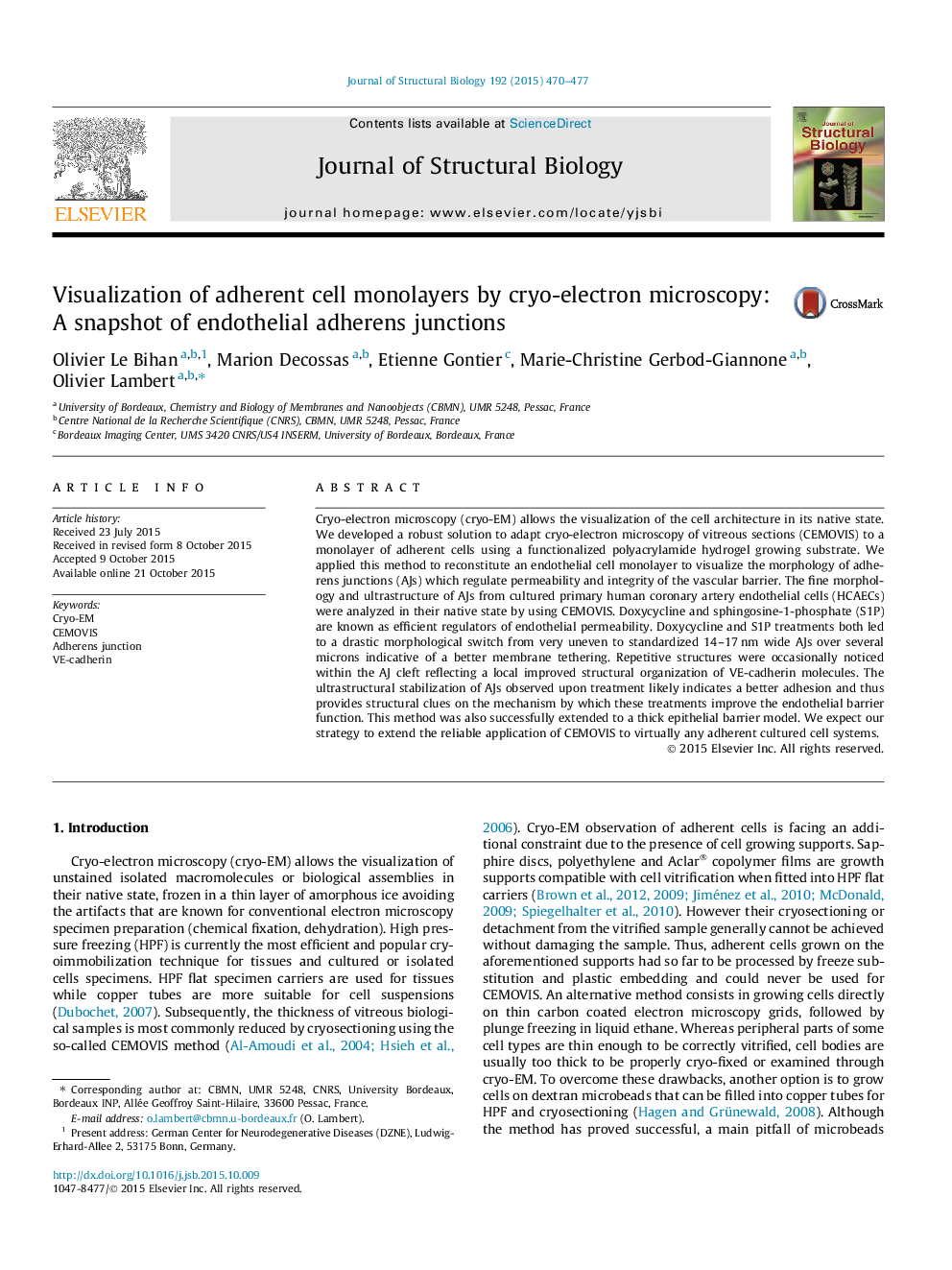| Article ID | Journal | Published Year | Pages | File Type |
|---|---|---|---|---|
| 5913670 | Journal of Structural Biology | 2015 | 8 Pages |
Abstract
Cryo-electron microscopy (cryo-EM) allows the visualization of the cell architecture in its native state. We developed a robust solution to adapt cryo-electron microscopy of vitreous sections (CEMOVIS) to a monolayer of adherent cells using a functionalized polyacrylamide hydrogel growing substrate. We applied this method to reconstitute an endothelial cell monolayer to visualize the morphology of adherens junctions (AJs) which regulate permeability and integrity of the vascular barrier. The fine morphology and ultrastructure of AJs from cultured primary human coronary artery endothelial cells (HCAECs) were analyzed in their native state by using CEMOVIS. Doxycycline and sphingosine-1-phosphate (S1P) are known as efficient regulators of endothelial permeability. Doxycycline and S1P treatments both led to a drastic morphological switch from very uneven to standardized 14-17Â nm wide AJs over several microns indicative of a better membrane tethering. Repetitive structures were occasionally noticed within the AJ cleft reflecting a local improved structural organization of VE-cadherin molecules. The ultrastructural stabilization of AJs observed upon treatment likely indicates a better adhesion and thus provides structural clues on the mechanism by which these treatments improve the endothelial barrier function. This method was also successfully extended to a thick epithelial barrier model. We expect our strategy to extend the reliable application of CEMOVIS to virtually any adherent cultured cell systems.
Related Topics
Life Sciences
Biochemistry, Genetics and Molecular Biology
Molecular Biology
Authors
Olivier Le Bihan, Marion Decossas, Etienne Gontier, Marie-Christine Gerbod-Giannone, Olivier Lambert,
